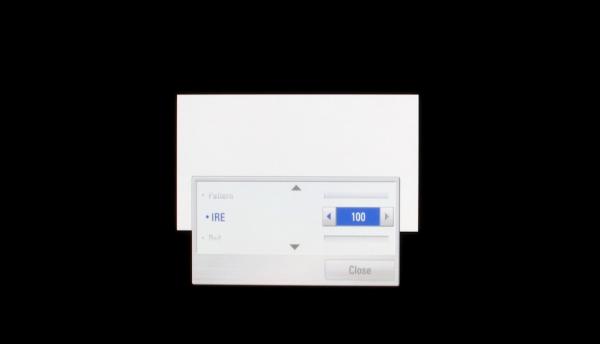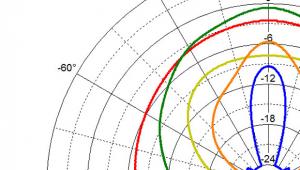On Measuring and Calibration: The LG 50PZ950

I've got LG's new 50PZ950 plasma in my lab for an upcoming review in the magazine. The set had some cool features I didn't have space to mention, so I figured I could talk about them here instead.
The short version? It has some of the most extensive calibration settings I've ever seen on a TV.
And yet, they're not enough.
Nearly every modern television lets you adjust the color temperature. You can largely thank TV reviewers for that, since we've complained about it for so long. Because of the rapid pace at which TVs are assembled, it's impossible to get this color temperature calibrated perfectly at the factory. At least not across the entire grayscale. In other words, most TVs will have bright images that are warmer or cooler than their dark images. This is why TV calibration exists.
If you're not sure about the importance of color temperature, and you don't mind jumping away from the gorgeous new S+V website, I wrote a pretty elaborate article called What is color temperature, and why does it matter? over on CNET. It will open in a new window so you can keep reading here.
We TV reviewers (and ISF- and THX-trained calibrators), will calibrate a TV so its color temperature is consistent across the grayscale range. Usually, this is achieved by adjusting six controls: Red, green, and blue "gain" and red, green, and blue "bias" or "cutoff." The gain controls adjust the amount of each color with bright images, the bias controls adjust the same with dark images. You can think of these like the treble and bass controls on your stereo, a coarse correction for the top and bottom. "Dial" them in correctly, and you'll get a perfectly accurate white: not too red, not too blue, not too green.
In general, these do a decent job. You can dial in the color temperature on most modern TVs pretty well using these six controls. To the extent, at least, that the grayscale is consistent enough that any differences are beyond the perception of the human eye/brain.
The 50PZ950, though, brings calibration to a whole new level. Instead of coarse gain and bias controls, you get a 20-step RGB adjustment. You can fine-tune the grayscale at 5-IRE increments. It's like having a graphic equalizer for your TV, ensuring perfectly accurate color temperature across the entire grayscale range.
But like a storied audio authority once opined, "Equalizers are like chainsaws in the hands of babies." Having this much adjustability means it will take your ISF or THX calibrator much longer to calibrate your TV. The end result may be better, but it's doubtful it will be better enough (as compared to the adjustment achieveable with regular gain/bias controls) to be noticeable. Alternatively, you can choose the old-school two-step RGB controls. But if that level of detail is there, wouldn't you want to use it?
An additional problem is the menu within which you make the adjustments is bright and huge (see picture). So huge and bright, in fact, that the additional light it emits affects the readings of the measurement meter. Once you take the menu away . . . the meter reads differently. Imagine spending an hour dialing in the TV, then taking the menu away, and it measures measurably warmer. Doh!
Lastly, even though there's a multi-step, color decoder adjustment section of the menu, there isn't any way to adjust the actual color points. And that ends up being important.
In the end, I'm glad to have lots of adjustments, and would like even more. It doesn't cost those who never use them anything, and for those of us who tweak TVs, it's awesome. In this TV's case, though, I would have liked a few more adjustments, and a better thought out menu to adjust them with.
So how is the TV? Well, you'll have to pick up the October issue of S+V to find out.
- Log in or register to post comments




































































